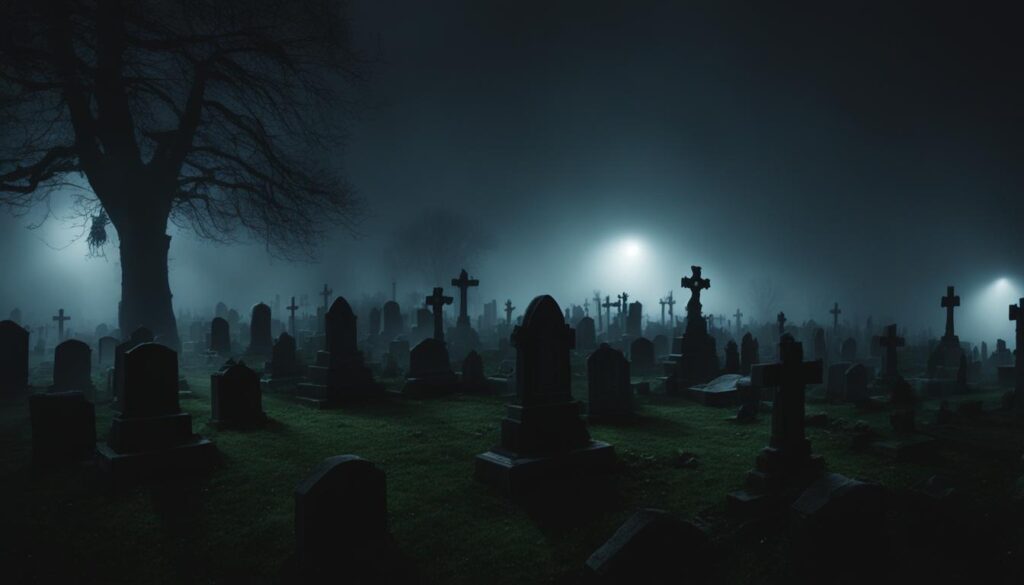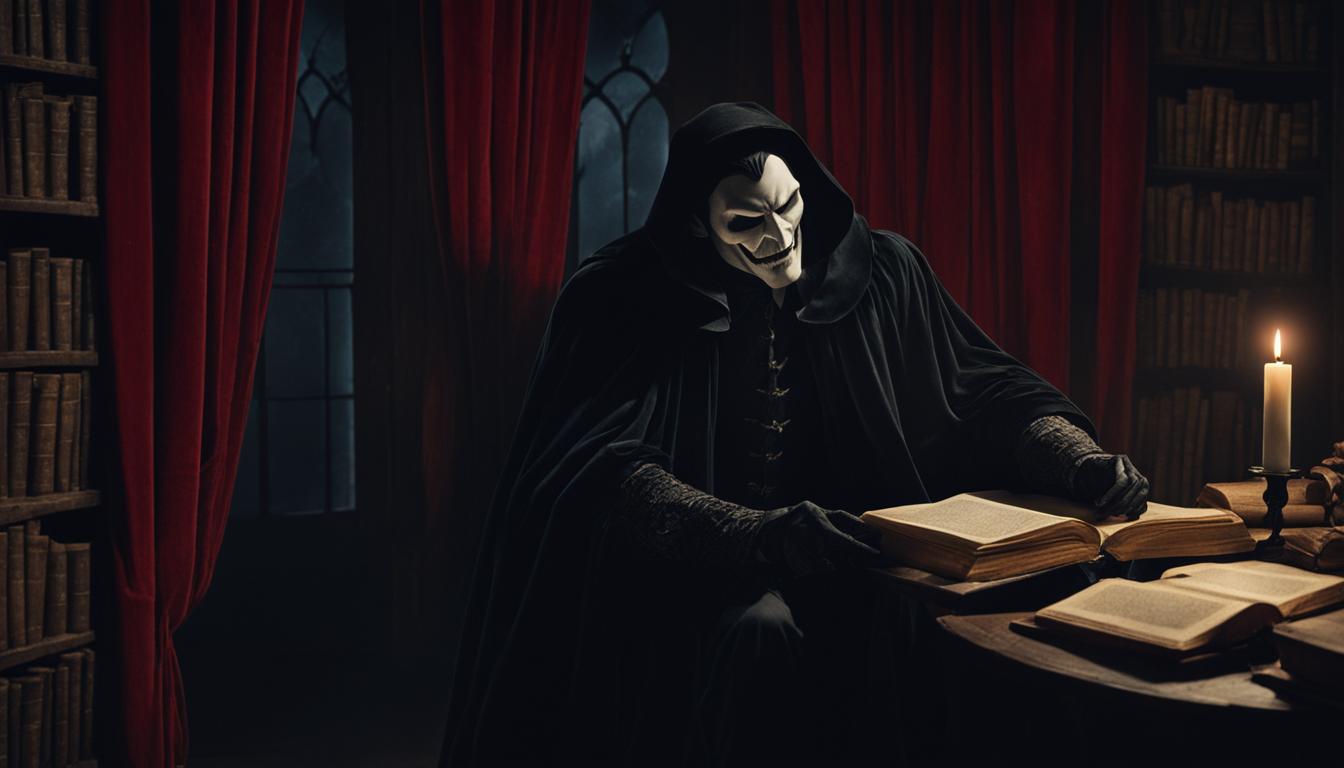If you’re a fan of vampire literature, then look no further than Anne Rice’s gothic classic, “Interview with the Vampire”. First published in 1976, this immortal tale has been captivating readers for over four decades and has now been brought to life in an audiobook format. In this audiobook review, we explore the alluring narrative of Rice’s masterpiece and delve into how the audiobook adaptation brings the dark and evocative story to life.
The Storyline and Setting
Set in the enchanting city of New Orleans, “Interview with the Vampire” takes readers on a captivating journey into the world of vampires. The novel is part of the popular vampire chronicles, which include other notable works such as “The Vampire Lestat” and “The Queen of the Damned.” Central to the plot are the two main characters, Lestat de Lioncourt, a flamboyant and charismatic vampire, and Louis de Pointe du Lac, a tormented and sensitive immortal struggling to navigate his existence.
The novel explores the complex relationship between the two protagonists as they confront the challenges of everlasting life, struggling to reconcile the moral implications of their actions. As the story unfolds, readers are drawn into a world of vampires, where they witness the birth of a new vampire, Claudia, and her relationships with Louis and Lestat. Through these characters, Anne Rice creates a rich and detailed world showcasing the darker side of humanity.
Beneath the surface lies complex themes that Rice seamlessly integrates into the narrative, exploring the psychological and philosophical implications of immortality. The setting of New Orleans serves as the perfect backdrop for the story, imbuing it with a dark and alluring ambiance that emphasizes the atmosphere of the novel.
Themes and Symbolism
As an exploration of immortality, Anne Rice’s “Interview with the Vampire” raises many existential questions about what it means to be human. The novel’s vampires, while undeniably immortal, struggle with their connections to humanity and morality, constantly blurring the lines between good and evil. Rice’s use of religious symbolism throughout the story, particularly in the character of Lestat, adds another layer of complexity to the narrative and highlights the moral ambiguity present in the characters.
One significant theme in the novel is the idea that immortality does not necessarily equate to happiness or freedom. Louis, one of the main characters, wrestles with the curse of endless life and questions the value of existence without any finality or resolution to his struggles. The novel raises important questions about what it means to be alive, and whether or not an infinite existence has any meaning or purpose.
The religious symbolism present throughout the novel adds an extra layer of ambiguity to the story. Lestat, for example, is portrayed as the “bringer of death,” a satanic figure who embodies evil and chaos. However, his actions and motives are often morally ambiguous and invite further interpretation. Through this use of symbolism, Rice encourages readers to engage with the deeper meaning behind the story and to consider the philosophical implications of immortality.
Writing Style and Narrative Perspective
For Anne Rice, writing is an art and a passion that is reflected in her unique writing style characterized by lush descriptions and evocative language. Her rich descriptive prose immerses the reader in a vivid, alluring world that evokes a range of emotions and sensations.
In “Interview with the Vampire,” Rice’s writing style is particularly effective in intensifying the haunting atmosphere of the story. By using the first-person narrative, Rice offers a deep, personal connection between the reader and the characters.
The first-person narrative also adds to the atmospheric tension of the story, placing the reader in the position of listener, hearing the story directly from the characters themselves. This technique enhances the novel’s immersive quality, allowing the reader to experience the story’s events vicariously.
“The imaginative transformation of reality, the evocation of an atmosphere or mood, something approaching that degree of visionary excitement and horror and awe which the French call le sublime, is what Anne Rice scares us with.”
Anne Rice and Descriptive Prose
Rice’s talent for descriptive prose has been a defining element of her writing throughout her career. Her works are known for their intricate details and lush descriptions, from the grandiose architecture of her settings to the delicate nuances of her characters’ emotions.
Readers and critics alike have praised Rice’s ability to create richly layered worlds that are both haunting and beautiful, and her writing has become an inspiration for many aspiring writers.
Ultimately, Anne Rice’s writing style, combined with the use of the first-person narrative, is what makes “Interview with the Vampire” such an engrossing and unforgettable read.
Audiobook Production and Narration
One of the most exciting aspects of “Interview with the Vampire” is its audiobook adaptation. The audio format allows listeners to fully immerse themselves in the lush, gothic ambiance of Rice’s masterpiece.
Central to the success of the audiobook is the narrator’s voice performance. Through skilled intonation and pacing, the narrator expertly brings each character to life, adding a nuanced layer of depth to the storytelling.

Additionally, the narrator’s portrayal of each character is crucial in creating an immersive and engaging experience for the listener. Each character is distinctively voiced, allowing for a more profound appreciation of their individual story arcs and character development.
Character Development and Relationships
One of the most captivating aspects of “Interview with the Vampire” is the multi-dimensional character development of its protagonists. Throughout the narrative, we witness the evolution of Louis and Lestat, exploring their individual character arcs and their complex relationship with each other. From the charismatic bravado of Lestat to the tormented introspection of Louis, Anne Rice skillfully crafts characters that are both compelling and relatable.
Adding to the complexity of the story is the introduction of Claudia, a young vampire who has a profound impact on both Louis and Lestat. Her relationships with the two main protagonists further highlight the intricate dynamics present within the vampire world Rice has created.
Through explorations of jealousy, betrayal, and loyalty, “Interview with the Vampire” intricately weaves a narrative that explores the complexities of human relationships, even in the supernatural world.
Historical and Cultural Context
Experience the vibrant city of New Orleans in the 18th-century, brought to life in “Interview with the Vampire” through the lens of historical fiction. Anne Rice’s portrayal of this unique cultural landscape reveals a rich tapestry of traditions, including gastronomy, music, and folklore.
Vampire lore is intricately woven into the narrative, infusing the story with supernatural elements linked to the region’s history and heritage. The iconic figure of the vampire, an immortal and alluring creature, is steeped in cultural meaning, providing a rich thematic backdrop for the novel.
Reception and Influence
“Interview with the Vampire” has garnered critical acclaim since its publication in 1976, with the novel leaving an indelible mark on vampire literature and pop culture. The literary community and readers alike have praised Anne Rice for her unique and innovative take on the vampire mythos, with many citing her work as a reshaping force within the genre.
The novel’s enduring appeal and popularity have led to countless adaptations in various forms of media, including films, television shows, and graphic novels. “Interview with the Vampire” has also inspired a legion of devoted fans and sparked a larger cultural fascination with vampire subculture.
“Anne Rice did for vampires what J. K. Rowling did for wizards and J. R. R. Tolkien did for elves.”
Critical Acclaim
Rice’s work has been extensively studied and analyzed by literary scholars, who have lauded the novel for its complex themes, narrative structure, and vivid imagery. Many critics have commended the novel’s exploration of moral ambiguity, religious symbolism, and existentialism, with some comparing Rice’s writing style to that of Gothic masters such as Edgar Allan Poe and Mary Shelley.
Vampire Literature and Pop Culture Impact
“Interview with the Vampire” has had a significant impact on vampire literature and popular culture, with many authors and screenwriters drawing inspiration from Rice’s work. The novel created a sub-genre within vampire fiction, with many subsequent works exploring similar themes of immortality, moral ambiguity, and complex relationships between vampire characters.
| Book | Author | Year |
|---|---|---|
| The Vampire Lestat | Anne Rice | 1985 |
| Twilight | Stephenie Meyer | 2005 |
| True Blood (TV series) | Alan Ball | 2008-2014 |
“Interview with the Vampire” also spawned a successful film adaptation in 1994, directed by Neil Jordan and starring Tom Cruise, Brad Pitt, and Kirsten Dunst. The film received critical and commercial success, further cementing the novel’s place in pop culture history.
With its enduring legacy and wide-ranging influence, “Interview with the Vampire” remains a must-read for both fans of vampire literature and those interested in exploring the complexities of the human psyche.
Audiobook Experience and Atmosphere
Listening to “Interview with the Vampire” audiobook is an immersive experience that transports listeners into the haunting world of Anne Rice’s classic novel. The audio effects used throughout the audiobook enhance the storytelling, creating an atmospheric soundscape that captures the dark ambiance and allure of the narrative.
The eerie sound effects and haunting background music perfectly complement the rich descriptive prose, creating a fully-realized world that listeners can lose themselves in. The audio format amplifies the sensory experience, providing a truly captivating journey into the heart of Rice’s gothic masterpiece.

“The audiobook of Interview with the Vampire was an experience like no other. The way the narrator brought the characters to life and the background audio effects made me feel like I was right there with them in the story. It was truly a haunting and memorable experience.” – Jessica M.
Comparisons to Other Works by Anne Rice
While “Interview with the Vampire” is Anne Rice’s first published novel, it is part of a larger body of work that includes several other notable works.
The Vampire Lestat, the second book in Rice’s Vampire Chronicles series, explores the backstory of Lestat, one of the main characters from “Interview with the Vampire.” The novel has a more action-oriented plot and delves deeper into the vampire mythology that Rice created.
The Queen of the Damned, the third book in the Vampire Chronicles series, takes a wider scope than the previous two books and introduces a host of new vampire characters. This novel also delves into the history of vampires and how they evolved over time, providing readers with a more comprehensive exploration of Rice’s imagined vampire world.
The Witching Hour, a work of gothic horror outside of the Vampire Chronicles series, centers on the Mayfair family, who possess powerful psychic abilities. While the novel diverges from the vampire theme, it shares many similarities in terms of its exploration of themes such as immortality and the supernatural, as well as Rice’s signature lush prose.
In terms of writing style, Rice’s works are always characterized by their rich descriptive prose and vivid language. She creates intricate character arcs and relationships, focusing on both the inner struggle of her protagonists and their external conflicts.
| Interview with the Vampire | The Vampire Lestat | The Queen of the Damned | The Witching Hour | |
|---|---|---|---|---|
| Publication Date | 1976 | 1985 | 1988 | 1990 |
| Genre | Vampire Literature | Vampire Literature | Vampire Literature | Gothic Horror |
| Main Character | Louis de Pointe du Lac | Lestat de Lioncourt | Akasha | The Mayfair Family |
| Themes | Immortality, humanity, moral ambiguity | Vampire mythology, Lestat’s backstory | History of vampires, good vs. evil | Supernatural, Mayfair family history |
“As a fan of Anne Rice, I have read most of her books. While “Interview with the Vampire” will always hold a special place in my heart, I must say that “The Vampire Lestat” is my personal favorite. It expands on the world Rice created in the first novel and provides an in-depth look at one of the most enigmatic characters in the series.” – Goodreads Reviewer
Overall, while each of Rice’s works has its own unique themes and characters, they are all united by her signature evocative language and exploration of the supernatural. Fans of “Interview with the Vampire” are bound to find other works in Rice’s oeuvre that captivate and enthrall them.
Legacy and Enduring Appeal
Since its publication, “Interview with the Vampire” has garnered an enthusiastic and loyal following among the vampire fandom. Its exploration of immortality, humanity, and moral ambiguity has kept readers captivated for decades.
Anne Rice’s legacy as a vampire literature pioneer is often attributed to the success of “Interview with the Vampire.” Her richly textured writing style, masterful character development, and seductive portrayal of vampires have had a lasting impact on the genre.
The novel’s influence can be seen in the vampire subculture, with fans creating their own interpretations of Rice’s characters and immersing themselves in the dark ambiance of the narrative.
The enduring appeal of “Interview with the Vampire” can be attributed to its timeless themes, unforgettable characters, and compelling story. Its status as a gothic classic is secure, and its impact on literature and popular culture is sure to last for many more decades to come.
Critical Analysis and Interpretations
While “Interview with the Vampire” is often lauded for its captivating plot and mesmerizing characters, a critical analysis reveals that the novel is imbued with subtext and socio-cultural commentary that elevates it beyond a traditional vampire tale.
At its core, the novel is an exploration of immortality and the weight it places on the individual. Through the character of Louis, Rice examines the isolation and loneliness that comes with living forever. His angst-ridden reflections and inner turmoil mirror the existential questions of humanity, challenging readers to consider the implications of eternal life.
Furthermore, “Interview with the Vampire” is a profound commentary on moral ambiguity and the blurred lines between good and evil. Rice creates a world where the vampires exist in a moral grey area, neither wholly good nor wholly evil. Their actions are driven by complex motivations and desires, rather than simplistic ideological beliefs. This exploration of morality makes the novel a multi-faceted piece of literature that encourages deeper engagement and reflection from readers.
Religious symbolism is another vital element of the novel’s subtext. The Catholic church plays a significant role in the story, particularly through the character of Louis, who struggles with the implications of his vampiric nature in light of his Catholic upbringing. Rice weaves in themes of sin, redemption, and salvation throughout the narrative, encouraging readers to consider broader philosophical and religious questions.
The novel’s powerful socio-cultural commentary is perhaps most evident in its nuanced portrayal of gender and sexuality. Through the character of Claudia, Rice challenges traditional gender roles, presenting a young girl who is turned into a vampire and must navigate the brutal world of immortality as a child trapped in a woman’s body. Similarly, the complex relationship between Lestat and Louis can be read as a commentary on queer desire and the struggles faced by LGBTQ+ individuals.
In conclusion, “Interview with the Vampire” is a fascinating piece of vampire literature that deserves deeper literary analysis. Through its exploration of immortality, moral ambiguity, religious symbolism, and socio-cultural commentary, Rice upends traditional vampire tropes and creates a multi-dimensional narrative that continues to captivate audiences to this day.
Memorable Quotes and Passages
As one of the most influential and groundbreaking works of vampire literature, “Interview with the Vampire” is teeming with unforgettable quotes and iconic passages that have captivated readers for decades. Here are just a few examples of Rice’s mastery of language and her ability to craft memorable and thought-provoking prose:
“Evil is a point of view. We are immortal. And what we have before us are the rich feasts that conscience cannot appreciate and mortal men cannot know without regret. God kills, and so shall we; indiscriminately He takes the richest and the poorest, and so shall we; for no creatures under God are as we are, none so like Him as ourselves, dark angels not confined to the stinking limits of hell but wandering His earth and all its kingdoms.”
“The world changes, we do not, therein lies the irony that kills us.”
“I would never have asked for immortality had I known that in this world of infinite possibilities it was probable that we would meet.”
These notable quotes showcase Rice’s distinctive prose style, her keen insight into the complex inner lives of her characters, and her ability to explore timeless themes of immortality, humanity, moral ambiguity, and the blurred boundaries between good and evil. “Interview with the Vampire” continues to inspire readers and listeners alike, solidifying its status as a timeless classic of gothic literature.
Discussion and Reader Engagement
Join the conversation and share your thoughts on “Interview with the Vampire”! This novel has generated a wealth of discussion, including critical analyses, personal interpretations, and fan theories. Have you read the book in a book club? What were some of the key points of discussion? Share your favorite passages or quotes from the novel.
Reader Opinions
We invite you to share your thoughts and opinions on “Interview with the Vampire”. What did you like about the novel? What themes or symbols resonated with you the most? Did you find any aspects of the story particularly thought-provoking or controversial? Use the comments section to discuss your own interpretations and hear from other readers.
Fan Theories
“Interview with the Vampire” has inspired a range of fan theories that speculate on the hidden depths and meanings of the story. Join the conversation and contribute your own theories, whether it’s about the characters, the plot, or the underlying themes. Share your insights and hear from other fans in the comments below.
Key Discussion Points
| Discussion Point | Questions to Consider |
|---|---|
| Characterization | What are your impressions of Lestat and Louis? How do their personalities and motivations drive the story forward? |
| Themes | What are some of the central themes explored in the novel? How does Rice use symbolism to underscore these themes? |
| Narrative Style | How does Rice’s use of first-person narration impact the reader’s connection to the story? How does her writing style contribute to the dark and evocative atmosphere of the novel? |
| Legacy and Influences | What is “Interview with the Vampire”‘s impact on vampire literature and pop culture? How does it compare to other notable works within the genre? |
What are your thoughts on the novel? Share your opinions and engage in the discussion around “Interview with the Vampire”.
Conclusion
In conclusion, “Interview with the Vampire” stands the test of time as a gothic masterpiece that continues to enthrall readers and listeners alike. Anne Rice’s expertly crafted narrative invites us to explore the complexities of immortality, humanity, and the blurred lines between good and evil, all while immersing us in a hauntingly beautiful world of New Orleans culture and vampire lore.
Through our comprehensive audiobook review, we have delved into the story’s atmospheric setting, complex character relationships, and profound themes and symbolic motifs. We have examined Rice’s distinct writing style and the audiobook’s immersive experience, as well as the book’s critical reception and enduring appeal.
Furthermore, we have explored how “Interview with the Vampire” fits into the broader context of Anne Rice’s vampire chronicles and its impact on vampire literature and pop culture as a whole. We have delved into the novel’s socio-cultural commentary and memorable quotes and passages, highlighting its mastery of language and the enduring impact it has had on readers and fans.
In essence, “Interview with the Vampire” is a tour de force of storytelling that has stood the test of time. It continues to captivate readers and listeners with its alluring narrative, complex characters, and rich thematic depth. We invite readers to engage in book club discussions, share their opinions and fan theories, and continue to celebrate this timeless gothic classic.



